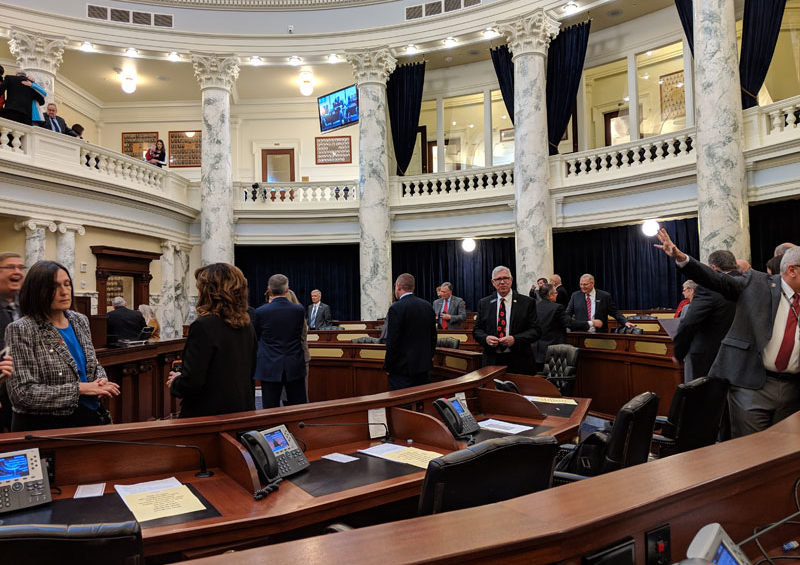
When legislators head to Boise in January, what do we do all day?
Good question.
At the start of the session, we spend a lot of time in committee meetings. In the House, most of us end up on three committees. Five committees meet every day in the morning. Eight committees meet in the afternoon on alternating days. The final one (Ways & Means) meets as needed.
During the organizing session last week, more than one committee chairman told us to prepare for homework. We’ll need to read each of the bills and review supporting materials to ensure we understand the proposed legislation.
Last week, I met all my committee chairmen and vice chairs. They’re fantastic men and women, and I look forward to learning from them and participating fully in the committee process.
For this term, my assignment includes:
- Appropriations (JFAC)
- Resources & Conservation
- Environment, Energy & Technology (EET)
All three of these committees play an important role in issues that matter to Eastern Idaho. On Appropriations, we review state budgets for the different agencies. We also look at current revenues. Based on public hearings and other research, we then appropriate funds for the next budget.
Appropriations operates as a joint committee. Both House and Senate members work together with a co-chair and co-vice-chair from each chamber. At the beginning of the session, the committee receives the proposed budgets from the state agencies and a separate set of recommendations from the Governor. Sometimes those numbers will match. Other line items won’t. It’s up to the committee to sort through the requests. You’ll hear about many of the Governor’s priorities during the State of the State Address on January 7.
The committee then holds public hearings to review the requests from both the agencies and the Governor. Based on the information we receive, we then work as a committee to build a budget for all the different agencies and programs in the state. If those bills pass out of committee, each budget will go to the House for consideration. If a majority supports an appropriations bill in the House, it will head to the Senate for a vote.
With a successful vote in both chambers, the bill then goes to the Governor. He’ll have the option to sign it into law or veto it if he disagrees.
A similar process happens on the other committees. For Resources & Conservation, we tackle potential legislation involving water quality/rights, Fish & Game, and River Restoration. On Environment, Energy & Technology, we address issues related to cyber-security, hazardous waste, and our Department of Environmental Quality (DEQ).
The work we do on these committees helps set the direction of the legislative session. Without the support and approval of the related committee, it’s difficult (but not impossible) for a proposed bill to reach the House floor. I’ll share more in the coming weeks about the process and specific legislation.
You can follow committee work throughout the session even if you don’t live in Boise. “Idaho in Session,” the service provided by Idaho Public Television, will stream committee hearings. I encourage you to check in when you have the chance. As the session moves along, I’ll highlight some of the different bills that could have a direct effect on Eastern Idaho.
Please let me know if you have questions about the process or how you might contribute.